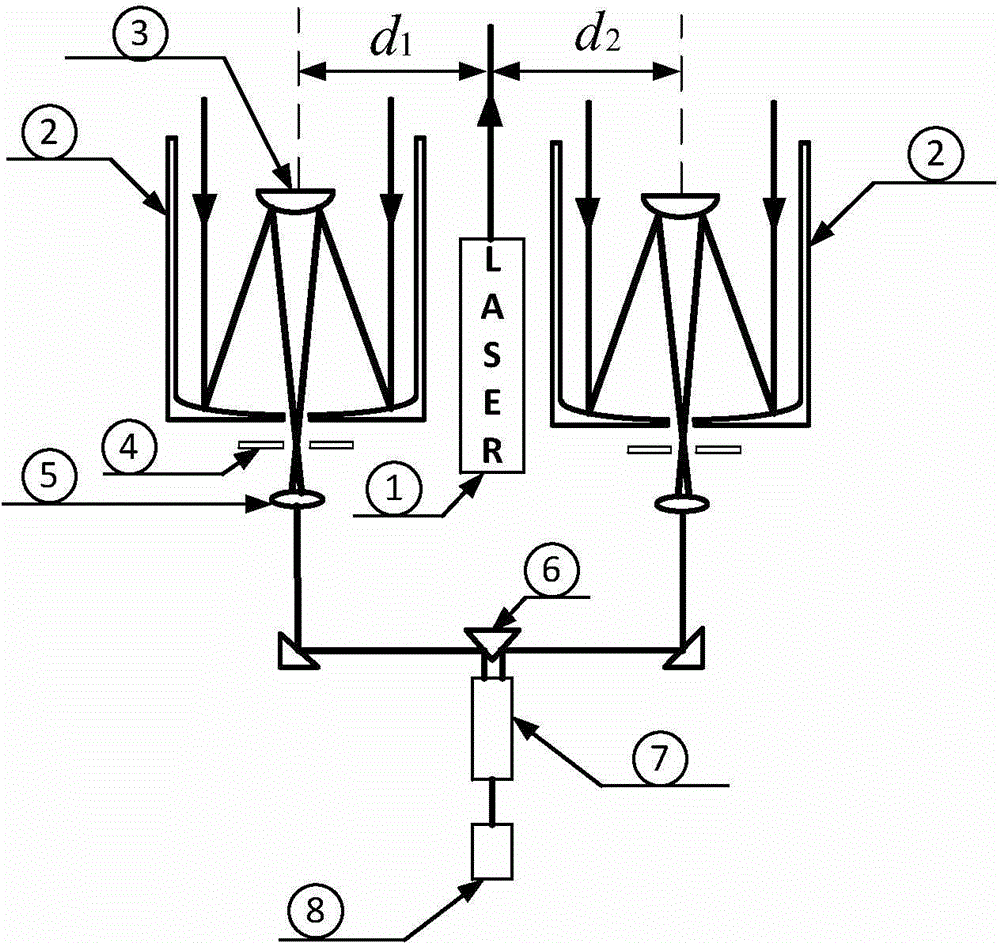Atmosphere remote sensing laser radar optical receiving device based on telescope arrays
A laser radar and optical receiving technology, which is used in measurement devices, climate sustainability, and re-radiation of electromagnetic waves. It can solve the problems of the upper limit of the size of large-diameter telescopes and the difficulty of processing, and increase the echo signal strength and effective detection range. Effect
- Summary
- Abstract
- Description
- Claims
- Application Information
AI Technical Summary
Problems solved by technology
Method used
Image
Examples
Embodiment Construction
[0022] The present invention is further analyzed below in conjunction with specific examples.
[0023] The basic lidar equation is
[0024] P ( r ) = CY ( r ) A r 2 β ( r ) T 2 ( r ) , - - - ( 2 )
[0025] In the formula, P(r) represents the intensity of the echo signal, C represents the system constant, including the energy of the emitted laser, the transmittance of the system, etc., Y(r) is the overlap factor between the emitted laser and the field of view of the telescope, and β(r) represents Backscatter coefficient, T 2 (r) refers to the atmospheric extinc...
PUM
 Login to View More
Login to View More Abstract
Description
Claims
Application Information
 Login to View More
Login to View More - R&D
- Intellectual Property
- Life Sciences
- Materials
- Tech Scout
- Unparalleled Data Quality
- Higher Quality Content
- 60% Fewer Hallucinations
Browse by: Latest US Patents, China's latest patents, Technical Efficacy Thesaurus, Application Domain, Technology Topic, Popular Technical Reports.
© 2025 PatSnap. All rights reserved.Legal|Privacy policy|Modern Slavery Act Transparency Statement|Sitemap|About US| Contact US: help@patsnap.com



